We all know that opening strategies in chess are to develop your pieces, and then middlegame is all about attacks and exchanging pieces.
After a well-played middlegame, the endgame often seems obvious. However, every chess player must know endgame strategies for a definite win. So, here are 11 chess endgame strategies for you to ace your chess-playing skills.
- 11 Chess Endgame Strategies
- 1. Centralized King
- 2. Queening the Pawn Strategy
- 3. Opposition Strategy | Keep an Extra Pawn
- 4. Pawn vs. Pawn Strategy | Stop the Connected
- 5. The Two Bishop Strategy
- 6. Trading Strategy | Exchange Pieces
- 7. Rooks Battery Strategy
- 8. Two Weakness Principle
- 9. Triangulation Strategy Using the Triangulation
- 10. Réti Maneuver | The Hunt of Two Hares Strategy
- 11. Time Management
- Conclusion
- FAQs
- 1. What are chess endgame strategies?
- 2. Why are endgame strategies important in chess?
- 3. What are the basic principles of chess endgame strategy?
- 4. Can you explain a few common endgame strategies?
- 5. How can I improve my endgame strategy in chess?
- 6. What are some resources for learning chess endgame strategies?
- 7. How do endgame strategies differ between various chess piece types?
- 8. Are there any common mistakes in chess endgame strategies?
- 9. How can I practice chess endgame strategies effectively?
- 10. Is it necessary to memorize endgame strategies for chess?
11 Chess Endgame Strategies
1. Centralized King
In the endgame, the king transforms from a piece to protect into a powerful weapon. Rather than hiding it in the corner, bring your king into play. The golden rule is simple: centralize the king. Positioned near the center, it can support pawns, restrict your opponent’s pieces, and often become a decisive factor in winning the game.
Why should you centralize the king during the endgame?
In a chess game, the chances for a mating attack are highest during middlegame when the opponent pieces are hovering around. During the endgame, the middlegame's cut-throat competition reduces to fewer pieces and pawns.
The board is mostly empty, with only countable pieces on each side. Therefore, the chances of a mating attack are very less.
Use the opportunity and employ the king at the center of the board because
A centralized king can help you promote pawns.
A king has more options to move to a safe square when under attack and avoid a stalemate.
A king in the center can capture pieces.
Example
In the below image, let's look at the power of the centralized white king at e6. From this position, it can attack black pawns at d6, next e5, and then, help the white pawn at d5 to march towards the end file.
The white king's central position keeps white in an advantageous position. From this position, the moves to win for white can be: 1. Kxd6 Ke2 2. Kxe5 Kxf3 3. d6 Ke3 4. d7 f3. 5. d8=Q f2 6. Qf8 Ke2
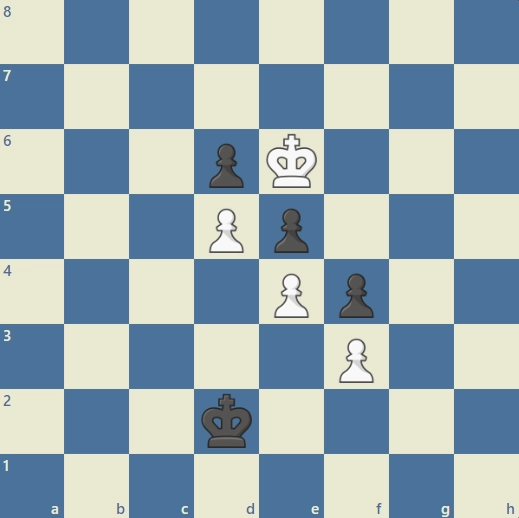
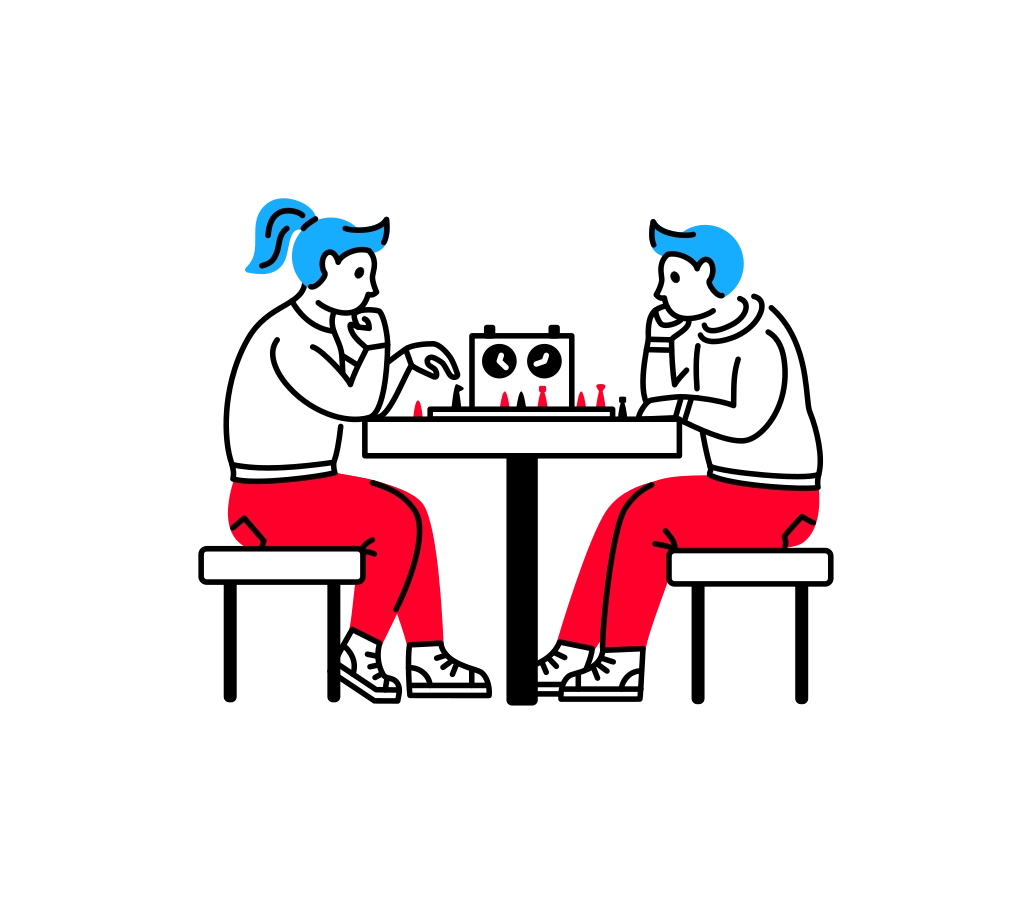

2. Queening the Pawn Strategy
Don't focus on immediate mating unless you have definite plans to trap the opponent king if you want to ace your endgames. Otherwise, you will check the enemy king, and it will move to the next safe square. You will check it again, and it will move back to the previous square.
In such cases, it's more likely to be a drawn game. To ensure you trap the opponent king, you will need powerful pieces like the queen. So, always try to focus on queening a pawn. Please remember, you can have two queens upon pawn promotion.
Example
In the below image, the white queen was already in 7th file, trapping the black king in the 8th file. Next, white promoted its h-pawn to the queen at h8, resulting into an obvious checkmate situation.
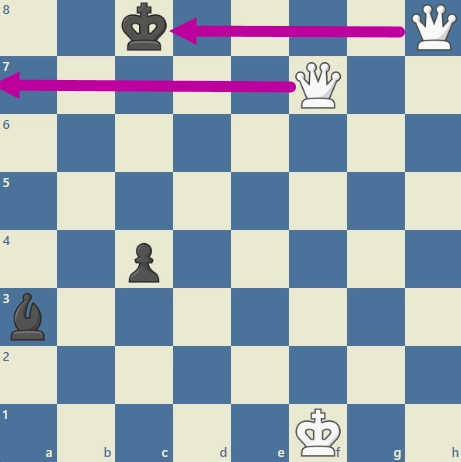
3. Opposition Strategy | Keep an Extra Pawn
If two kings are in an opposition position, you need to have the opposition. The player who doesn't have the immediate move in such positions is said to have the opposition because they benefit from moving to a safe square.
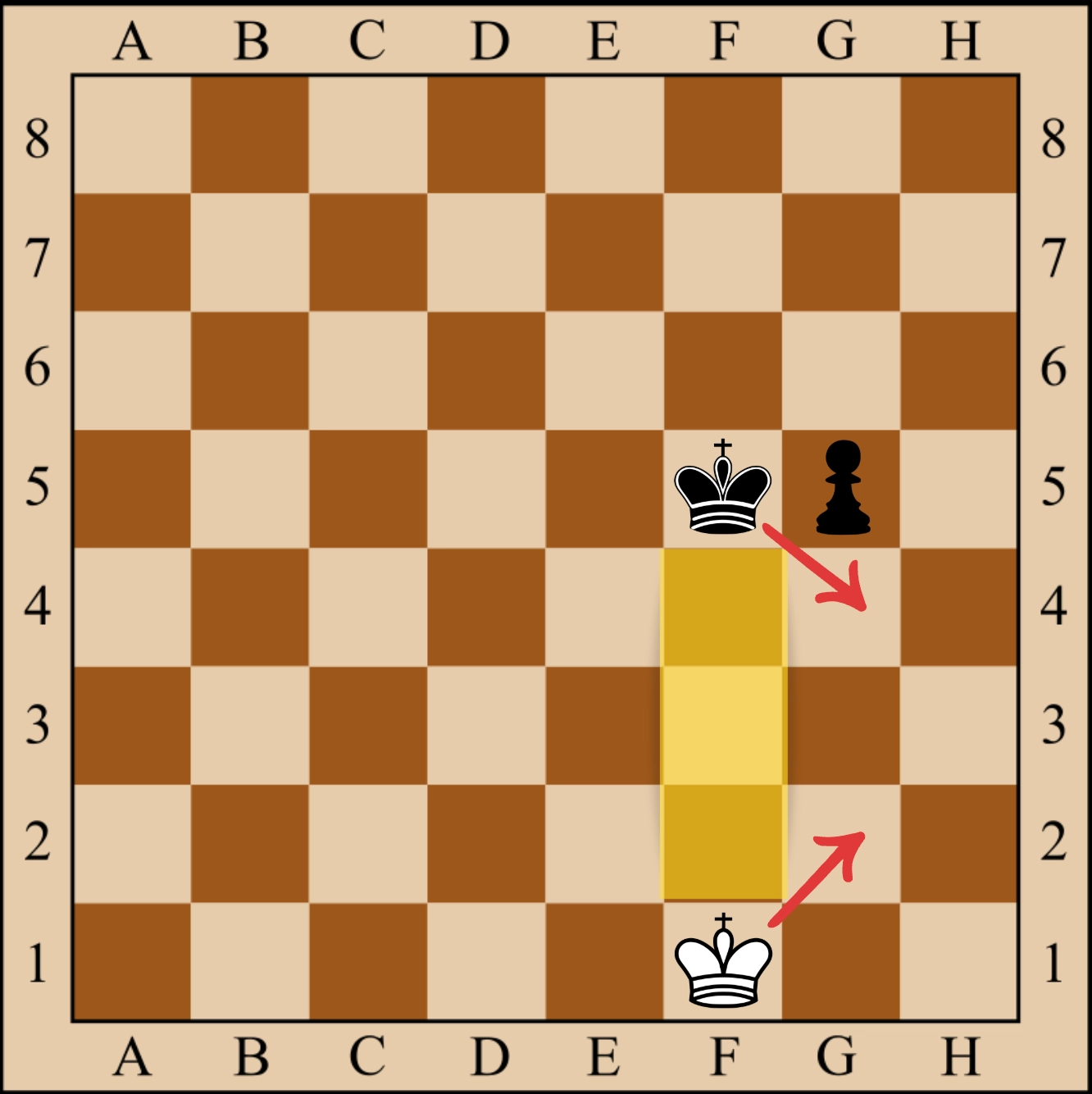
You must have an extra piece or pawn to make the dead moves to achieve that, like the black pawn in the image.
That way, you can make the enemy king move first, and you can get the advantage of moving to a safe square. For instance, in this example, the black king can make the white king to take the first move and move to a safe square. This strategy is vital in pawn endings.
Read to know what is an opposition position in endgames.
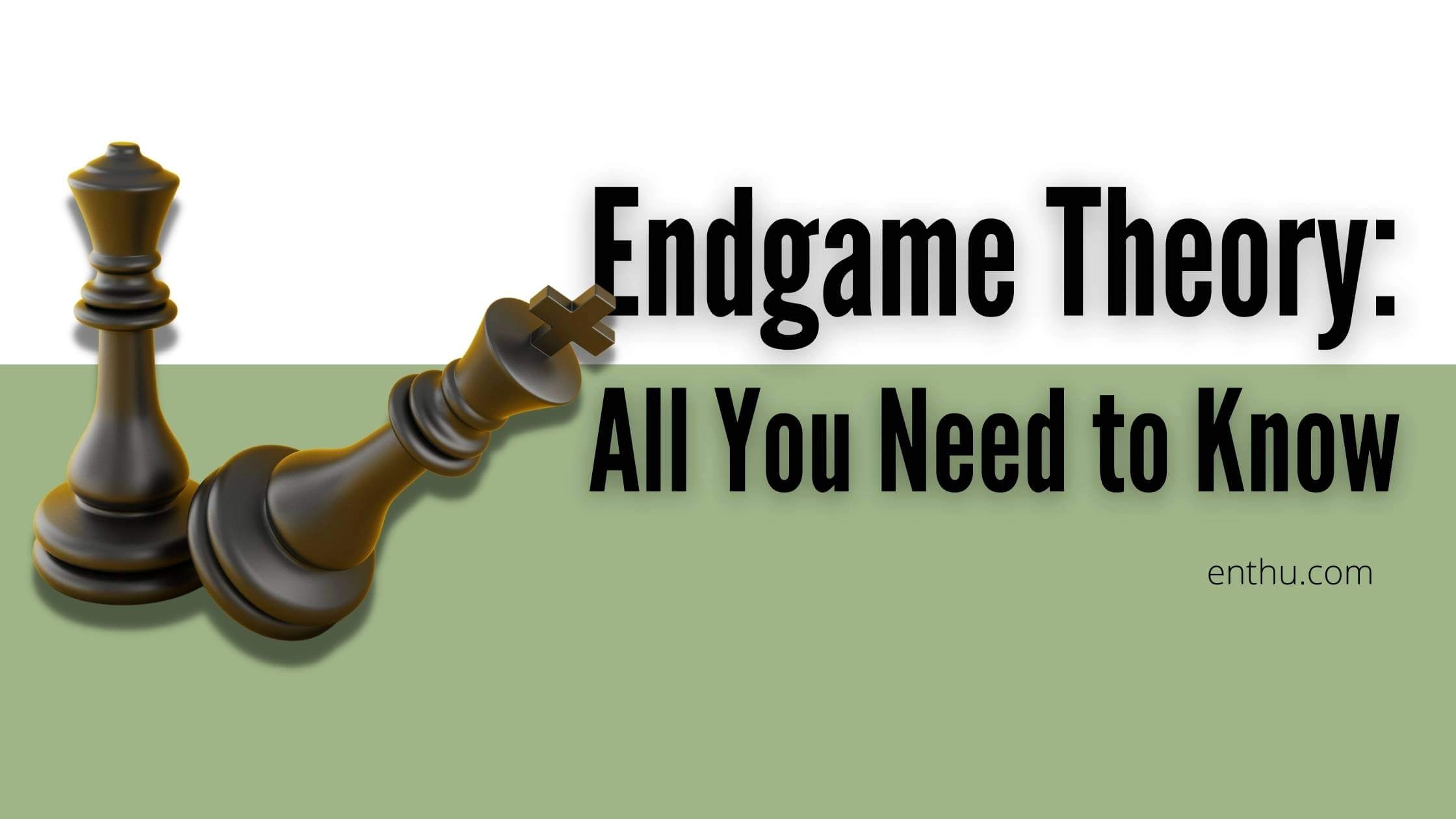
4. Pawn vs. Pawn Strategy | Stop the Connected
Pawns As much as you like pawn promotions, you can't afford it if your enemy does it. If you see two pawns connected in the enemy pawn structure, stop those right away.
Example
The pawns at f4 and g3 are connected pawns. If the pawn at g3 can take another moves, it will be promoted to a queen.
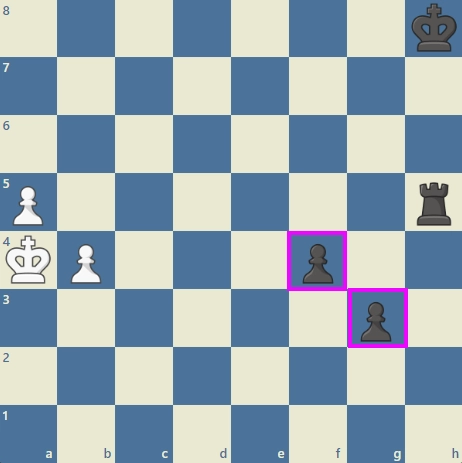
Why should you stop connected enemy pawns?
Connected pawns often lead to pawn queening. With two pawns going diagonally, they're more likely to reach the last file. Therefore, it's essential to stop connected pawns from promoting to a queen or other pieces.
How to stop connected pawns from promotion?
Use a pawn. Place the pawn in front of the enemy pawn, and it can't move anymore.
Example
In this example, the are two pairs of connected pawns: white pawns at f5 and g4 and black pawns at f6 and g5. Here, the black pawns are stopping the white connected pawns to move forward.
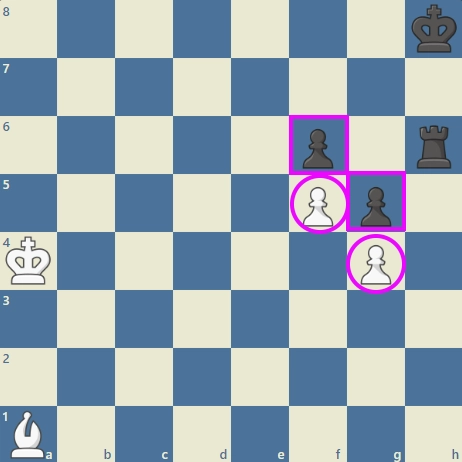
Try to use En Passant to capture connected pawns.
Exchange pawns when it's crucial.
5. The Two Bishop Strategy
Bishops are the best when you have two, as you can access both dark and light squares. In middlegame strategies , bishops are hardly too functional. They can't go long because of the crowded center.
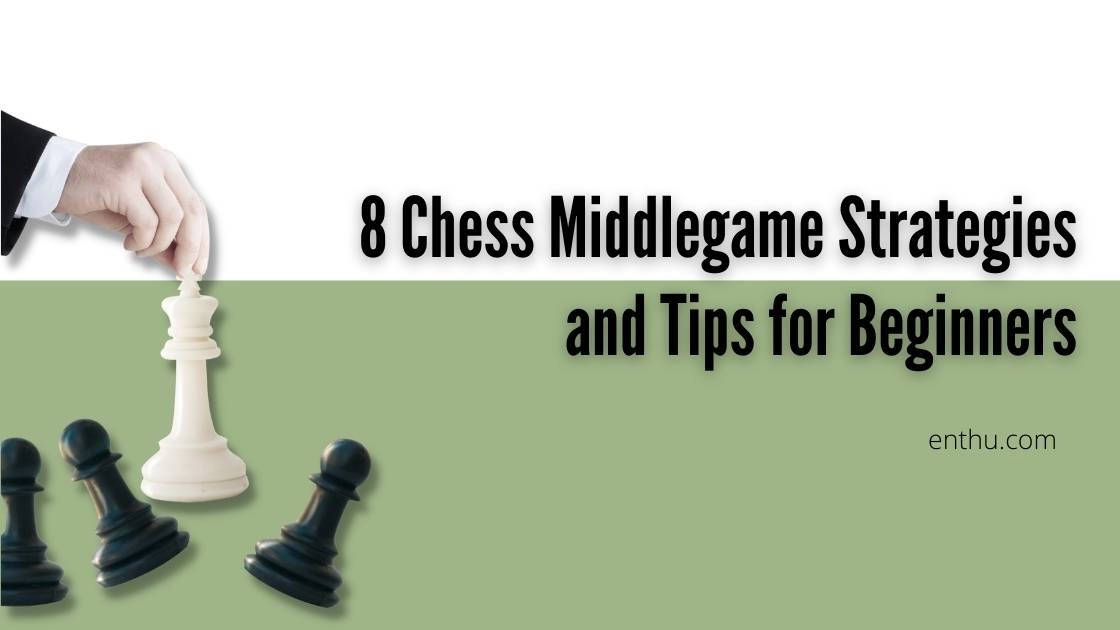
The best season for bishops is the endgame. We have an open position, and the bishops do their best to move from one part of the board to another.
What is the Two Bishop Strategy in endgames?
As the name suggests, this chess strategy is about the bishop pair capturing enemy pieces and eventually leading to the two-bishop checkmate.
Example
In this below picture, you can white bishops checkmating the enemy king. The black king is under check, but it can't move to g8 because it is also under attack by the other bishop. It's the ultimate goal of two-bishop strategy in endgames.
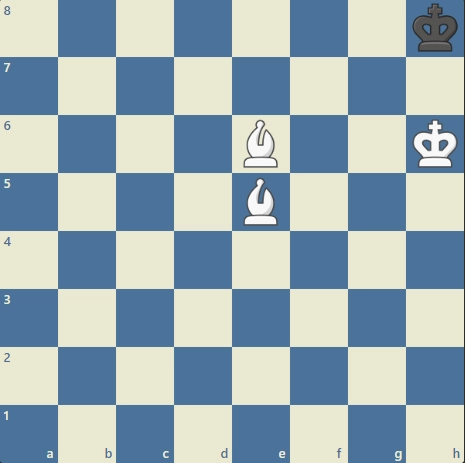
Why is the Two Bishop strategy important in endgames?
A bishop pair captures passed pawns and prevents pawn promotion.
A bishop can threaten the king, and the other bishop can trap the king from moving to the opposite (colored) file.
6. Trading Strategy | Exchange Pieces
Middlegames are most popular for exchanging pieces. However, you can also trade enough pieces (the required ones) and reach the endgame position you want to play. Always try to calculate the next five moves before trading pieces.
There are many grandmasters who exchanged queens and trapped themselves in a drawn game (because of insufficient material). Exchange pieces only when you have the material advantage, and you don't have extra pieces; trade pawns.
Why should you trade pieces in endgames?
You can gain a material advantage after trading pieces in endgames.
You will get to choose the endgame you want to play–pawnless endgame, bishop-pawn endgames, rook endgames, or queen-pawn endgames.
A player can gain a positional advantage after trading the right pieces.
7. Rooks Battery Strategy
What is a Battery in Chess?
In chess games, when two pieces are on the same line targeting the enemy king, it's called forming a battery. It's mostly the queen and the rooks that form a battery position.
However, a battery position can also be achieved diagonally with bishops and queen. When both the rooks are on the same file (with or without the queen), it's the rooks forming a battery. This strategy is one of the famous tricks in rook endgames.
Besides being one of the most powerful endgame possibilities on the chessboard, it ensures checkmate. By playing the right moves, you're sure to win.
Example
The black rooks on f5 and f6 are on the same file forming a battery. The rook at f5 will move to f1 to threaten the white king. Next, the white king has three options:
d1, d2, and e2, and all of these aren't safe squares. If it decides to capture the white rook instead, then it will be under attack by the rook at f6. So, it's a checkmate no matter what step the white king takes.
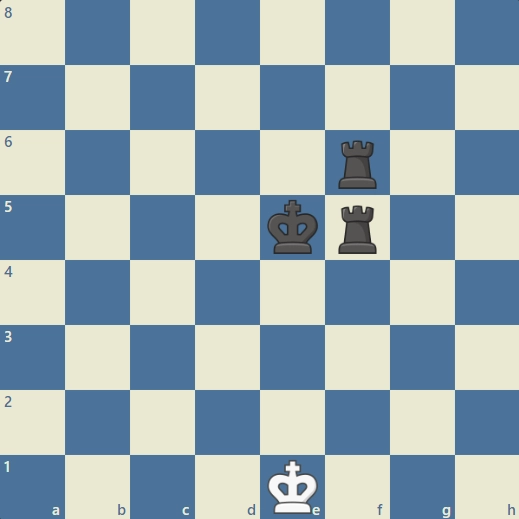
How to imply the Rooks battery strategy in the endgame?
To arrange rooks in a battery, you must have two rooks, obviously. A player must keep their rooks guarded throughout the game (or at least be careful) to achieve this position.
During the openings and the middle game, make sure you have the b-pawn and the g-pawn intact to save it from enemy rooks and the queen.
8. Two Weakness Principle
Always try not to exceed beyond one weak position in endgames. If you have two weak positions during the endgame, the enemy players might use the two weakness principle and win the game.
In the below picture, black has two weaknesses–first, the passed a-pawn (white), and second, is his K-side. Here, white can easily move to the K-side to capture the black pawns after sacrificing its a-pawn, eventually winning the game.
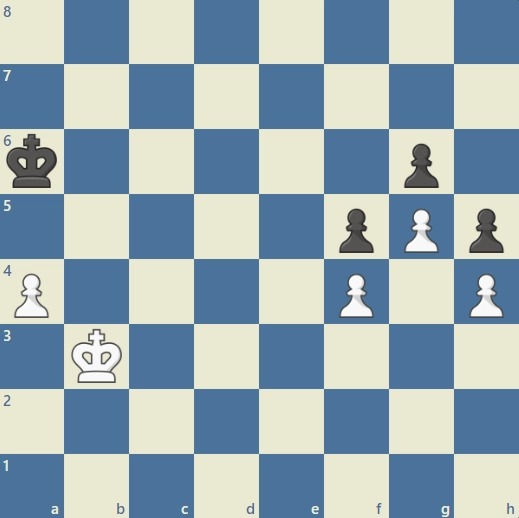
In the next picture, the situation is visibly different. Here, black has only one weakness, the passed a-pawn. Now, it's quite challenging for white to win.
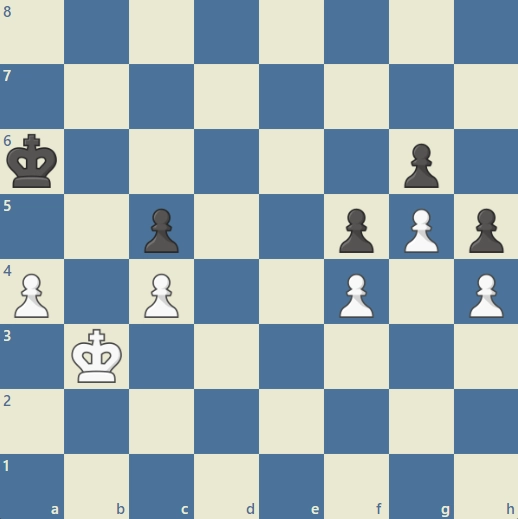
Try to manipulate your enemy to have two weaknesses.
9. Triangulation Strategy Using the Triangulation
Triangulation strategy, a player tries to lose a tempo and leave the opponent with the move.
In simpler words, instead of stepping into the opposition, which could be fatal for us, they use triangulation or the zugzwang technique to achieve a better pathway for their king, and instead, our opponent ends up in opposition. Basically, it's a strategy to trap your enemy player in an opposition position.
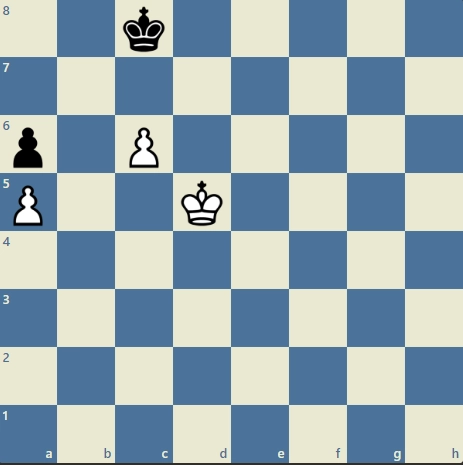
10. Réti Maneuver | The Hunt of Two Hares Strategy
Use the Reti endgame to utilize the king's power and win the game. Your king can carve out multiple locations while threatening the enemy pieces using this endgame strategy.
For instance, the white king in the below picture has ways to reach the black pawn.
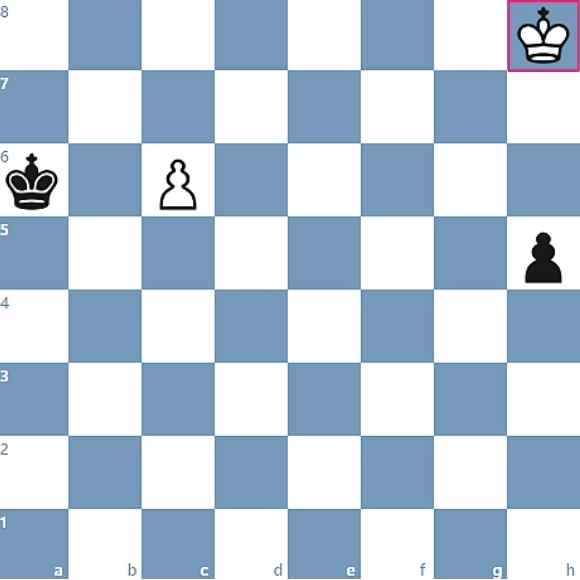
11. Time Management
My last strategy for you is time management. Yup, that's what it is. It's the most integral element of chess games. Strategize your time from the beginning of the game to master endgames.
I see chess players taking all the time in the world while playing the openings and middlegames. I suggest that you stop doing that. Think and act, but don't take too long.
That way, you will have sufficient time while playing the endgame. Remember, your fate depends on your performance in the endgames. Any mistake you make or any move you play, THERE'S NO TURNING BACK.
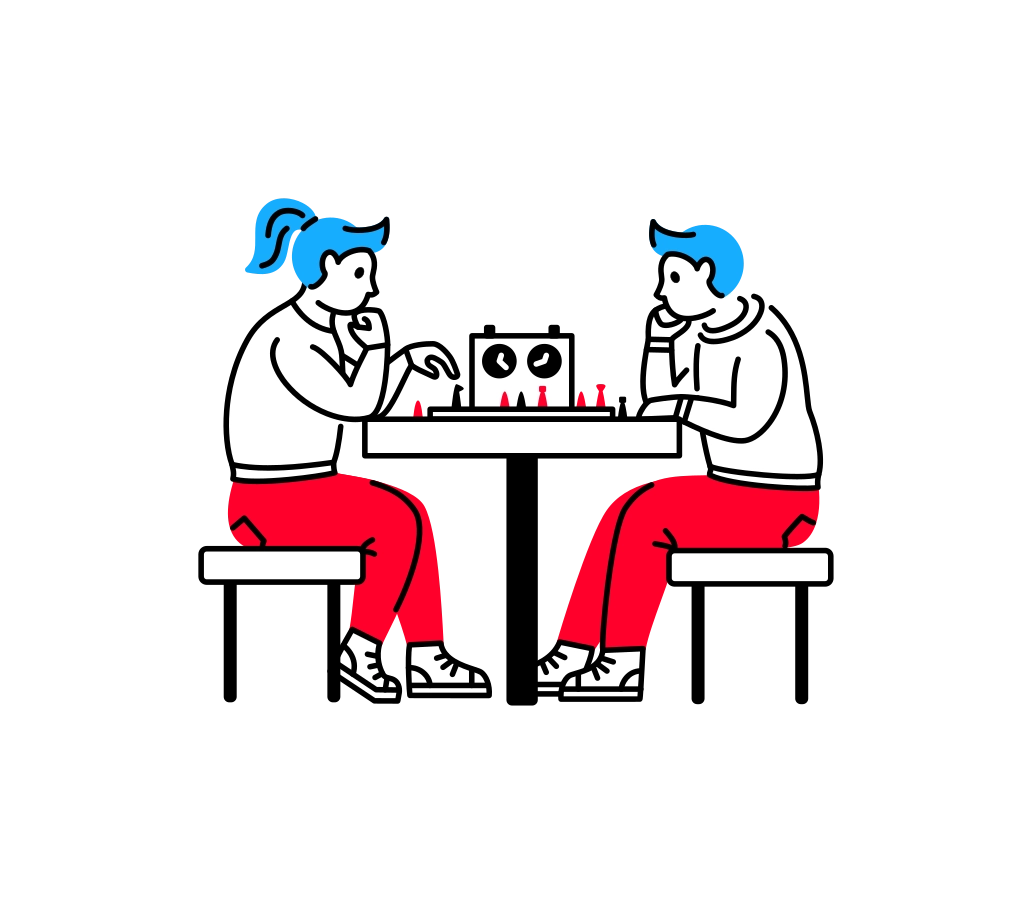

Conclusion
Endgames are the nail-biting stage in any chess game. Use the above strategies to perform better in the endgames.
However, I suggest using strategies after judging the positions and the pieces on the board. I have studied Endgame Strategy by M. I. Sherevsky several times. I recommend the same for beginners. Source: Endgame Strategy by M. I. Sherevsky
FAQs
1. What are chess endgame strategies?
Chess endgame strategies are techniques and principles used by players in the final phase of a chess game. Unlike the opening and middle game, where tactical threats and piece mobility are crucial, endgames focus on the positioning of pieces and pawns to secure a win or draw.
2. Why are endgame strategies important in chess?
Endgame strategies are vital because they can determine the outcome of a game when there are fewer pieces on the board. Understanding these strategies helps players convert winning positions into victories and hold on to draws in lost positions.
3. What are the basic principles of chess endgame strategy?
Basic principles of chess endgame strategy include:
King Activity: The king becomes a powerful piece in the endgame, so it should be centralized.
Pawn Promotion: Advancing pawns to promote them into queens can be a winning strategy.
Piece Coordination: Ensuring that your pieces work together to control key squares and limit your opponent's options is essential.
4. Can you explain a few common endgame strategies?
Certainly! Here are a few common chess endgame strategies:
The Opposition: A method used in king and pawn endgames where one player aims to control the squares in front of the opponent's king.
The Rook's Activity: In rook endgames, activating the rook to cut off the opponent's king can be very effective.
Creating Passed Pawns: A passed pawn is one that does not have opposing pawns in its way on its way to promotion, making it a strong asset in the endgame.
5. How can I improve my endgame strategy in chess?
You can improve your endgame strategy by:
Practicing key endgame positions regularly.
Studying classical endgame literature and resources.
Analyzing your own endgames to identify mistakes.
Playing focused endgame training sessions with specific goals.
6. What are some resources for learning chess endgame strategies?
Some great resources for learning chess endgame strategies include:
Books like "Silman's Complete Endgame Course" by Jeremy Silman.
Online courses and tutorials on platforms like Chess.com and Lichess.
Video lectures from chess masters available on YouTube.
7. How do endgame strategies differ between various chess piece types?
Endgame strategies differ significantly based on the types of pieces remaining on the board. For instance:
King and Pawn vs. King endgames emphasize pawn promotion.
Rook endgames involve active rook play and controlling the seventh rank.
Bishop vs. Knight endgames require understanding the unique strengths and weaknesses of each piece.
8. Are there any common mistakes in chess endgame strategies?
Yes, common mistakes include:
Neglecting to activate the king in king and pawn endgames.
Failing to promote a passed pawn when the opportunity arises.
Underestimating the importance of piece coordination and control of key squares.
9. How can I practice chess endgame strategies effectively?
You can practice chess endgame strategies by:
Utilizing endgame practice tools available on chess platforms.
Solving endgame puzzles daily.
Playing online games where you intentionally reach endgame positions for practice.
10. Is it necessary to memorize endgame strategies for chess?
While memorizing some key endgame strategies can be beneficial, understanding the principles and concepts behind them is more important. Recognizing patterns and applying knowledge to different positions will enhance your overall performance.
By familiarizing yourself with these frequently asked questions and their answers, you'll be better equipped to understand and implement effective chess endgame strategies in your games!


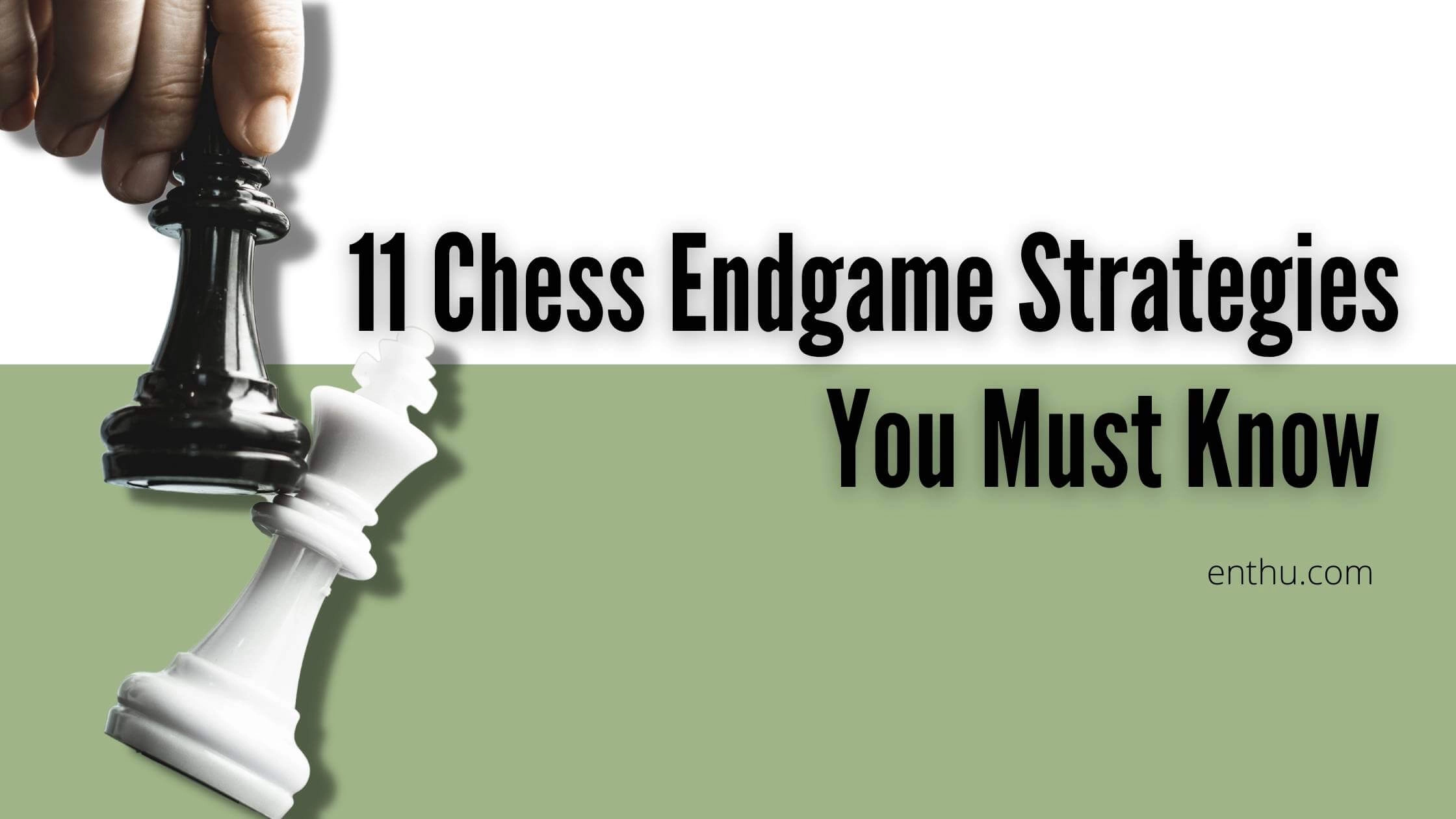
.png)

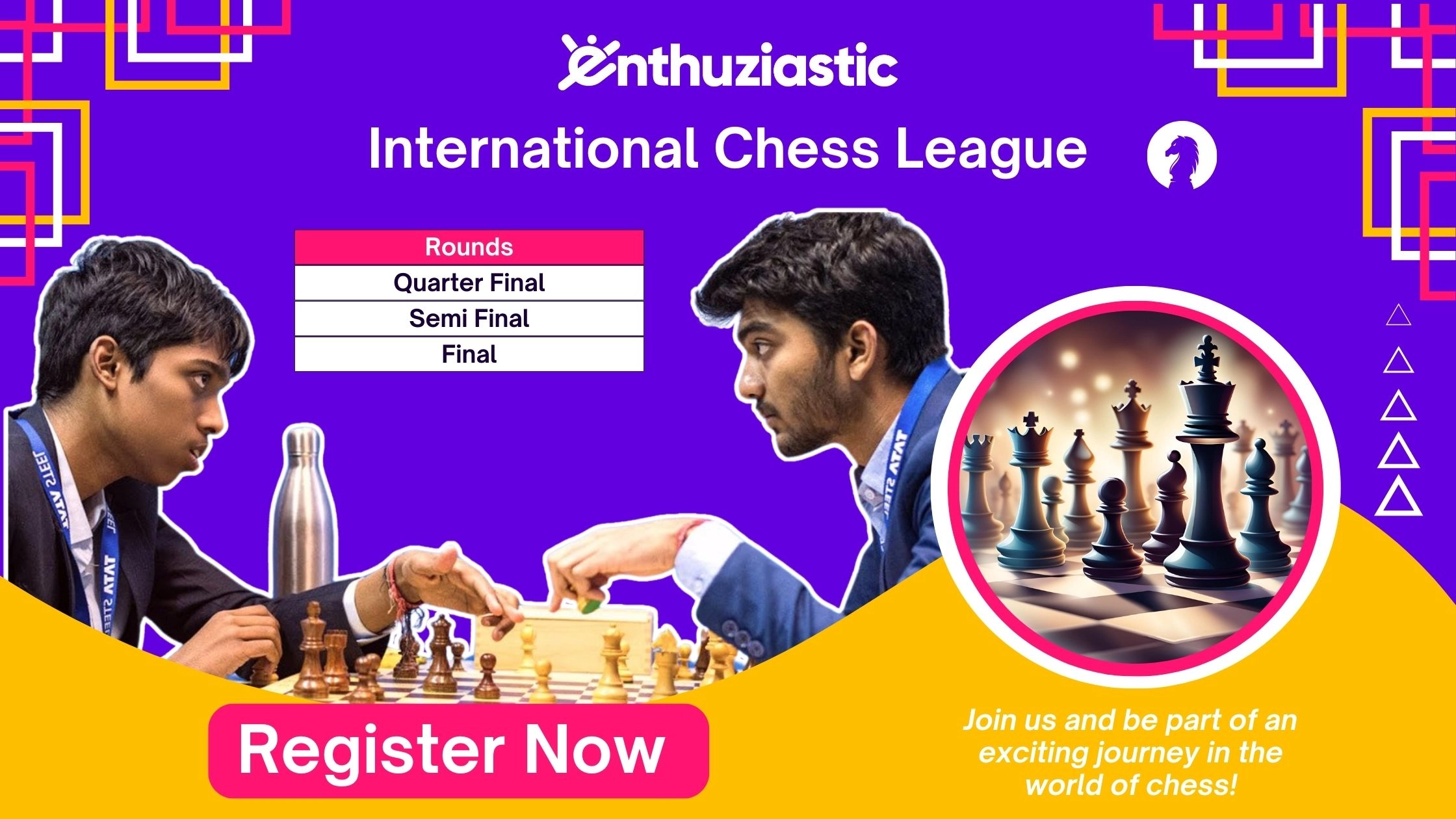
Comments